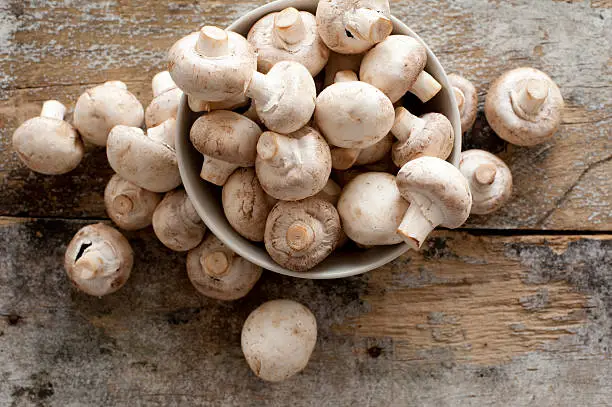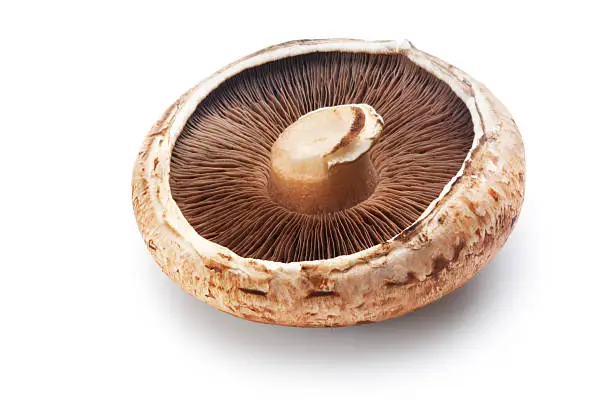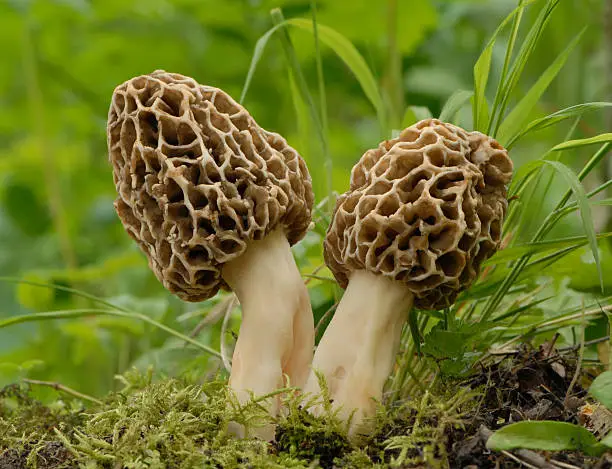Mushrooms are a versatile and nutrient-rich food that offer numerous health benefits, including boosting the immune system, supporting heart health, and enhancing brain function. Incorporating various types of mushrooms into your diet can improve overall well-being while adding unique flavors to your meals.

Mushrooms are a nutritional powerhouse that can significantly enhance your overall health. They are packed with essential vitamins and minerals, such as vitamin D, B vitamins, selenium, and potassium, which are crucial in supporting various bodily functions. Unlike many other foods, mushrooms are one of the few non-animal sources of vitamin D, essential for bone health and immune function. Incorporating mushrooms into your diet can help fill nutritional gaps, especially for those following plant-based diets or seeking to boost their intake of key nutrients.
Beyond their nutritional content, mushrooms offer unique health benefits that make them a worthy addition to your diet. Many mushrooms contain bioactive compounds like beta-glucans, which have been shown to enhance immune function, potentially reducing the risk of infections and chronic illnesses. Some varieties, such as lion’s mane, are linked to improved cognitive function, supporting brain health and potentially reducing the risk of neurodegenerative diseases. By adding mushrooms to your meals, you’re not only enjoying their delicious flavors but also supporting long-term health and well-being.
Another compelling reason to eat more mushrooms is their versatility and low-calorie content, making them an excellent choice for those managing their weight or reducing meat consumption. Mushrooms have a rich, umami flavor that can enhance a wide range of dishes, from salads and soups to stir-fries and grilled entrees. Their meaty texture makes them an ideal substitute for meat in various recipes, helping to lower calorie intake while still providing satisfying, flavorful meals. By embracing mushrooms as a regular part of your diet, you can enjoy delicious, nutritious meals that support a healthy lifestyle.
Types of Mushrooms
1) White Button Mushrooms (Agaricus bisporus)
White button mushrooms are among the most common and widely consumed mushrooms globally. They have a mild flavor that intensifies when cooked, making them a versatile ingredient in various dishes.
- Appearance: Small, white, and round with a smooth cap.
- Common Uses: Salads, soups, and as a pizza topping.

2) Cremini Mushrooms (Agaricus bisporus)
Also known as baby bellas, cremini mushrooms are simply a more mature version of the white button mushroom. They have a slightly firmer texture and a deeper flavor.
- Appearance: Brown, round, with a slightly firmer cap.
- Common Uses: Stir-fries, sauces, and risottos.
3) Portobello Mushrooms (Agaricus bisporus)
Portobellos are the fully mature version of the white button mushroom. They have a large, flat cap and a meaty texture, making them a popular meat substitute in vegetarian dishes.
- Appearance: Large, flat, brownish cap with visible gills underneath.
- Common Uses: Grilled as a burger substitute, stuffed with various fillings, or sliced into stir-fries.

4) Shiitake Mushrooms (Lentinula edodes)
Shiitake mushrooms are prized for their rich, savory flavor and are a staple in Asian cuisine. They have a distinctive, slightly smoky taste that adds depth to many dishes.
- Appearance: Dark brown, umbrella-shaped cap with a spongy texture.
- Common Uses: Soups, stir-fries, and as a flavor enhancer in broths.

5) Oyster Mushrooms (Pleurotus ostreatus)
Oyster mushrooms have a delicate flavor and a velvety texture. They grow in clusters and are available in various colors, including white, gray, and pink.
- Appearance: Fan-shaped, with a smooth, oyster-like texture.
- Common Uses: Sautéed in butter, added to soups, or used in stir-fries.

6) Enoki Mushrooms (Flammulina velutipes)
Enoki mushrooms are known for their long, thin stems and tiny caps. They have a mild, slightly fruity flavor and are often used in Japanese and Korean dishes.
- Appearance: Long, slender stems with small, white caps.
- Common Uses: Salads, soups, and as a garnish.
7) Chanterelle Mushrooms (Cantharellus cibarius)
Chanterelles are prized by gourmet chefs for their unique flavor, which is often described as peppery with a hint of fruitiness. They have a firm texture that holds up well in cooking.
- Appearance: Yellow to orange in color, trumpet-shaped with ridges instead of gills.
- Common Uses: Sautéed in butter, added to pasta dishes, or served with game meats.
8) Maitake Mushrooms (Grifola frondosa)
Also known as “hen of the woods,” maitake mushrooms have a strong earthy flavor and a meaty texture. They are often used in Japanese cuisine for their health benefits.
- Appearance: Clustered, with frond-like layers that resemble a bird’s feathers.
- Common Uses: Sautéed, used in soups, or as a meat substitute.
9) Morel Mushrooms (Morchella)
Morels are highly sought after by foragers and chefs alike for their unique honeycomb appearance and nutty flavor. They are considered a delicacy in many cuisines.
- Appearance: Cone-shaped, with a spongy, honeycomb-like exterior.
- Common Uses: Sautéed with butter, used in sauces, or paired with meats.

10) Truffles (Tuber spp.)
Though not technically a mushroom, truffles are a type of fungus that grows underground. They are incredibly rare and expensive, and known for their intense aroma and flavor.
- Appearance: Knobby, irregularly shaped, and typically dark in color.
- Common Uses: Shaved over pasta, infused in oils, or used as a luxury ingredient in gourmet dishes.
Health Benefits of Mushrooms
Mushrooms are not only diverse in flavor and texture but also packed with nutrients and health benefits. Here are some of the key benefits of incorporating mushrooms into your diet:
Rich in Antioxidants
Mushrooms are a great source of antioxidants, such as selenium and ergothioneine. These compounds help protect the body from oxidative stress and damage caused by free radicals, which can lead to chronic diseases like cancer and heart disease.
Boosts Immune System
Certain mushrooms, like shiitake and maitake, contain beta-glucans, which are known to enhance immune function. Beta-glucans stimulate the activity of white blood cells, helping the body fight off infections and illnesses.
Supports Heart Health
Mushrooms are low in calories, fat-free, and cholesterol-free, making them heart-healthy food. They also contain compounds like sterols and fibers that help lower cholesterol levels, reduce inflammation, and improve blood vessel function.

Improves Bone Health
Mushrooms, especially those exposed to sunlight, are an excellent source of vitamin D. This vitamin is crucial for calcium absorption and bone health. Including vitamin D-rich mushrooms in your diet can help prevent bone-related disorders such as osteoporosis.
Aids in Weight Management
Due to their low-calorie content and high fiber levels, mushrooms are an excellent choice for those looking to manage their weight. The fiber in mushrooms promotes a feeling of fullness, reducing overall calorie intake and aiding in weight loss.
Enhances Brain Function
Lion’s mane mushrooms, in particular, have been studied for their potential to improve cognitive function and memory. They contain compounds that stimulate the growth of brain cells and protect against neurodegenerative diseases like Alzheimer’s.
Regulates Blood Sugar Levels
Mushrooms are a good source of fiber and have a low glycemic index, meaning they have minimal impact on blood sugar levels. This makes them a suitable food choice for individuals with diabetes or those looking to maintain stable blood sugar levels.
Promotes Gut Health
Mushrooms are a source of prebiotics, which feed the beneficial bacteria in your gut. A healthy gut microbiome is essential for overall health, aiding in digestion, nutrient absorption, and even mental health.
How to Incorporate Mushrooms into Your Diet
Incorporating mushrooms into your diet is easy, given their versatility. Here are some simple ideas:
- Sautéed Mushrooms: Cook mushrooms with a bit of olive oil, garlic, and herbs for a simple side dish.
- Mushroom Soups: Make a hearty mushroom soup using a variety of mushrooms for different textures and flavors.
- Grilled Portobello Burgers: Substitute your meat patty with a grilled Portobello mushroom for a vegetarian option.
- Mushroom Stir-fry: Add a mix of mushrooms to your favorite stir-fry recipe for an umami boost.
- Stuffed Mushrooms: Fill large mushroom caps with cheese, herbs, and breadcrumbs, then bake until golden.

Conclusion
Mushrooms are a remarkable food, offering not only a diverse range of flavors and culinary possibilities but also an array of health benefits. From boosting your immune system to promoting heart health and supporting brain function, these fungi are a powerhouse of nutrition. So, the next time you’re at the grocery store or farmers’ market, don’t hesitate to pick up a variety of mushrooms and explore the many ways they can enhance both your meals and your health.
